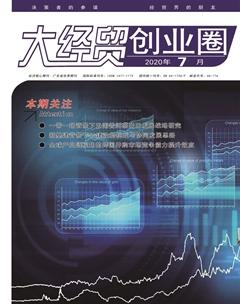Learning is More Self-directed
Some information is provided to us by the environment, and the timing and sequence of presentation is not under our immediate control (e.g., watching TV without a remote control or attending a lecture). Other information becomes accessible as a direct result of our own actions and choices, such as when we search for information online, interact with an unfamiliar device or mechanism, or ask questions of those around us. The goal of the present article is to consider the implications of these two modes of learning from both a cognitive and computational perspective.
The distinction between “active” and “passive” information acquisition is a perennial and hugely? influential topic in the learning sciences (Bruner, Jolly, & Sylva, 1976; Montessori, 1912/1964;? National Research Council, 1999; Piaget, 1930). For example, instruction methods such as? discovery learning (Bruner, 1961), experiential learning (Kolb, 1984), and inquiry learning (Papert, 1980) all advocate situations in which learners engage in active hypothesis testing, interaction with? learning materials, and self-directed exploration. In many of these accounts,? self-directed acquisition of information is seen not only as a pedagogical tool but also as a “motivating force” on the desire to learn (Berlyne, 1960; Hebb, 1955). Similar ideas are prominent in theories of cognitive development (Adolph & Eppler, 1998; Gibson, 1988; Kuhn, Black, Keselman, & Kaplan, 2000; Montessori, 1912/1964; Piaget, 1930; Schulz & Bonawitz, 2007).
However, relative to the widespread enthusiasm for an “active” view of human learning, there? has often been less attention given to self-directed information acquisition in cognitive psychology and cognitive neuroscience. In fact, empirical studies of human learning and memory are most typically passive in that the experimenter tightly controls (and manipulates) what? information is presented to the learner on every trial. As a result, basic research in learning and? memory has sometimes failed to make contact with core issues in educational research. Meanwhile, the many uses of the term “active learning” or “discovery learning” throughout the learning sciences have led to increasingly divergent conceptions of the basic issues (Chi, 2009).
Although the idea that learning should be “active” or “self-directed” is a long-standing and influential idea, there is often a lack of agreement about exactly what this means (Chi, 2009). For? example, self-directed learning is alternately associated with physical activity during a task (e.g., Harman, Humphrey, & Goodale, 1999), the generation effect (i.e., enhanced long-term memory? for material that is actively retrieved; Crutcher & Healy, 1989; Jacoby, 1978), or with elaborative cognitive processes such as providing self-generated explanations (Lombrozo, 2006; Roscoe & Chi, 2007, 2008). The present article focuses on a single dimension of self-directed learning, namely, the consequence of allowing learners to make decisions about the information they want to experience. Our assertion is that interactions between information sampling behavior (i.e., the decision to access or gather some piece of information) and learning is one domain in which education, cognitive science, cognitive neuroscience, and machine learning research have the greatest immediate potential for cross-fertilization.
However, distinguishing between these various senses of self-directed learning is difficult in most realistic learning situations. For example, in a passive learning environment wherein choices about information selection are limited, learners can still choose to selectively attend to different cues or features of the presented stimulus (e.g., Rehder & Hoffman, 2005). Even a teacher-led, “passive” student might be cognitively active in the sense of mentally evaluating hypotheses or explanations, just as a self-directed learner may engage in self-explanation in order to decide what information to access. Likewise, the degree of engagement of individual learners in a task (i.e., their level of “cognitive activity”) may be influenced by whether they are physically active during learning. Nevertheless, as our review will summarize, there are important psychological implications simply from allowing learners to make decisions about what information they want to access.
作者簡介:江濟森(1997-),男,漢族,山東文登市人,研究生在讀,學校:魯東大學

